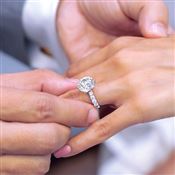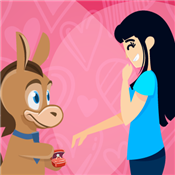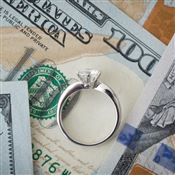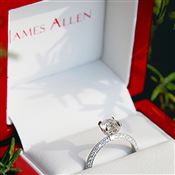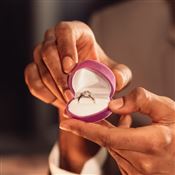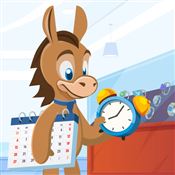Best Engagement Rings for Under $3,000
Got a $3,000 engagement ring budget? Learn which carat weight, clarity, and setting offer the best value and how to pick a ring your partner will love.
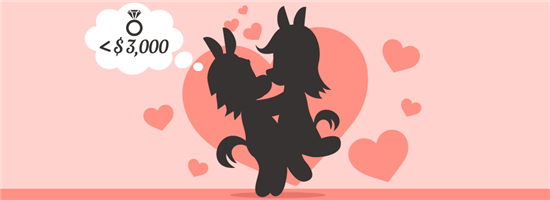 |
- Choose a Delicate Setting
- Look for an "Off-Size" Carat
- Skip D-E-F Colored Diamonds
- SI Clarity Is the Best Value
- Choose a Non-Round Shape
- Don't Skimp on Cut
- Check Out Lab Diamonds
- Go for Vintage Glamour
- Consider Diamond Alternatives
Where to Buy Your Engagement Ring
Finding your partner's dream ring doesn't have to be stressful.
And it definitely doesn't have to cost an arm and a leg.
For $3,000 or less, you can find the perfect ring to match her personality and your budget. Discover our top money-saving tips to score the perfect ring without sacrificing quality and look.
Yes, you can buy a beautiful engagement ring with a $3,000 budget. Consider non-round diamonds in a delicate setting for the best value. By doing some research and comparison shopping, you're sure to find options that suit both your partner's taste and your budget.
Average Engagement Ring Cost & Size
 |
The average size for a diamond engagement ring in the U.S. is about 1 carat. The average cost of an engagement ring in the U.S. is around $5,000. However, prices change over the years and vary by geographical location.
Remember: You don't have to spend that much to get a beautiful ring. Armed with basic jewelry knowledge, you can find the ring of your dreams for a price you can afford. Stick around for our best industry-insider tips.
There's a better way to figure out your budget. Take a good look at your expenses and savings to assess what you can realistically afford before you begin shopping.
What to Consider When Buying an Engagement Ring Under $3,000
 |
These features and money-saving tips will help you get the most out of your budget.
Tip #1: Choose a Delicate Setting
Rings can cost $1,000 or more even without the center stone. Precious metal prices are at an all-time high, so jewelers have bumped up their own prices as a result.
When engagement ring shopping, aim for a band with less metal. It's more affordable than a wider or heavier band.
Plus, a narrower band places more emphasis on the center stone. It can even create the illusion of a bigger diamond.
Settings with side or accent diamonds also add to the cost of your engagement ring. Consider a solitaire setting for a timeless, classic, and budget-friendly option.
One result of high gold prices is that platinum is now much more attainable. With market fluctuations, platinum rings may even be less expensive than gold. If your partner prefers the silver look, consider looking at platinum settings.
Tip #2: Look for an "Off-Size" Carat
Bigger isn't always better. With your $3,000 budget, you may be able to buy a large stone, but chances are it may have noticeable quality issues.
Instead, remember this trick:
Choose diamonds that aren't whole or half-carat weights. Many diamonds are sold by whole or half-carat numbers, like 1.5, and 2 carats. These "round numbers" are most popular, and usually more expensive.
Diamonds that are slightly larger or smaller than round numbers (like .97 carats or 1.46 carats), are called "off-sized." They're more affordable too.
Best of all, the difference in weight isn't visible to the naked eye.
Consider a marquise or pear-cut diamond. Jewelers say that these shapes have a bigger "face up" size than other shapes, meaning they look larger than the actual carat weight.
Tip #3: Skip D-E-F Colored Diamonds
Diamonds in the D-E-F range are considered colorless. They're also rare and much more expensive.
You can save some money by purchasing a stone in the near-colorless range (G-H-I) instead. The difference in color is barely noticeable.
Keep in mind that if your diamond is set in a white metal (like white gold or platinum), it can be noticeable if the stone has a faint yellow tint. This body color is less evident when a diamond is set in yellow gold.
Tip #4: "SI" Clarity Is the Best Value
The fewer inclusions a diamond has, the more valuable it is. But many inclusions are only visible under a microscope.
For the best value, buy a stone with a clarity grade of "SI". Why? Flaws will not be noticeable and they're more affordable than the coveted "VS/VVS" diamonds.
Avoid purchasing stones in the "I" category. This rating means that flaws like black spots or white "feathers" are visible to the naked eye.
Another tip: Diamond with extra facets may help hide minor imperfections in the stone. Shapes such as princess cut and cushion cut have many facets that not only add brilliance but can disguise tiny flaws as well.
Tip #5: Choose a Non-Round Shape
The shape of your diamond can play a significant factor in its price.
Because round diamonds are the most sought-after, they're also the most costly. It's basic supply and demand. The good news is that there are many other diamond shapes that are equally beautiful and less expensive.
Square shapes like the cushion or princess cut can be either classic or modern, depending on the setting that you choose. If you like a vintage feel, you might choose an oval or emerald shape.
Another advantage of a "fancy" cut diamond (meaning, any diamond that isn't round brilliant) is that it will probably be different than what all of your friends are wearing. Show your individuality with a ring that's as unique as you are.
Tip #6: Don't Skimp on Cut
A high-quality cut is key to making a diamond look more brilliant. Excellent cutting can even make a stone with flaws sparkle and look fiery.
The cut is also one of the most important characteristics in determining a diamond's value. Don't compromise too much here, as poor cutting can make a stone look hazy or dull.
Tip #7: Check Out Lab Diamonds
Natural diamonds have been the most popular choice for engagement rings for hundreds of years. But if you love traditional, classic rings, there are more options to choose from.
Lab-created diamonds are chemically identical to natural stones at a fraction of the cost.
Choosing a lab-grown diamond is a great way to save up to 50% on the cost of a stone. It's an eco-friendly, conflict-free choice.
Lab diamonds are also visually identical to natural stones. Hardly anyone can tell the difference by looking at it. Even a jeweler will probably be unable to distinguish the difference.
Tip #8: Go for Vintage Glamour
In the last decade, engagement rings have become more of a representation of our personalities. Choose a ring that reflects your style by repurposing vintage or antique jewelry.
Check at local jewelry shops for a variety of estate rings. You can also find a regularly changing selection of vintage rings at Etsy and Ross-Simons.
Whether you choose to wear a vintage ring as-is or place a new diamond in an older setting, pre-owned engagement rings are a great way to save money and give a treasured jewel new life.
Tip #9: Consider Diamond Alternatives
Love the look of diamonds but want a more ecologically sourced stone? There are budget-friendly alternatives that will give you the same classic look at a more reasonable price.
- White sapphire is a great choice for a stone that you can wear every day. Sapphires are quite durable but they lack the same fire that diamonds have.
Look for a white sapphire with excellent clarity and cut to bring the stone to life.
- Natural white zircon is an Earth-mined stone that closely resembles a diamond in brilliance and fire.
Don't confuse zircon with man-made CZs. At 4 billion years old, these sparklers are among the oldest gems on the planet.
- Finally, there's moissanite. If bling is your thing, this might be a great choice for you. This lab-grown stone boasts 4 times the fire of a diamond at less than half the cost.
But be cautious when shopping for Moissanite, since some stones have a faint yellow color.
Top Recommendations for Rings Under $3,000
A simple yet elegant solitaire is not only the most economical choice, but it also emphasizes your diamond the most.
If you want your diamond to be the star of the show, a classic 6-prong mounting is a great choice for a round stone.
Diamonds with a clean knife-edge (like this ring) add an element of interest to the clean lines of the diamond.
With a more intricate pattern, this filigree ring boosts the bling factor while still staying in your budget.
You can also save a great deal by buying your stone on the secondary market. Diamonds are incredibly durable, meaning they're unlikely to be damaged in the course of normal wear.
This makes them ideal for resale and up-cycling. At sites like Worthy, you can purchase quality pre-owned diamonds at 20% to 50% of the original cost.
Where to Buy Your Engagement Ring
If you want to see what looks best on your finger, you can start by going to a local jewelry store. Try on rings and get a sense of what you like.
From there, consider buying online for the best selection and value.
Search for Beyond Conflict-Free Diamonds
Shop for diamonds at Brilliant Earth, a CreditDonkey recommended partner for socially-responsible diamonds.
Bottom Line
If you remain open-minded and do your research, you'll discover that there are plenty of beautiful choices for engagement rings under $3,000. By staying flexible with your expectations, you open up a broad range of possibilities that will fit both your partner's style and your budget.
Write to Margarette McConnell at feedback@creditdonkey.com. Follow us on Twitter and Facebook for our latest posts.
Note: This website is made possible through financial relationships with some of the products and services mentioned on this site. We may receive compensation if you shop through links in our content. You do not have to use our links, but you help support CreditDonkey if you do.
|
|
| ||||||
|
|
|




